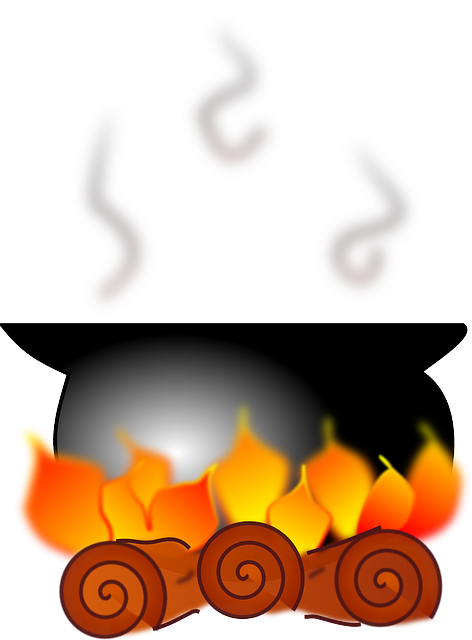STEEMIT PHYSICS CLASS | LESSON 1 - INTRODUCTION TO PHYSICS AND UNITS OF MEASUREMENT.

Honestly, apart from mathematics, there is no subject more common than physics. Everyone, unlearned and educated, including those who currently are majoring in art courses do practicalize the principles of physics as they carry out their daily activity. Take for instance the case of flushing the toilet after relieving oneself. Apart from the force of the water from the cistern, it is "Surface Tension", a phenomenon common in fluids that makes it possible for your toilet to be flushed.
Another example is drying of your clothes after washing them. Regardless of the drying method you chose (if you use a clothe dryer or you spread your clothes outside for the sun to dry them), they dry as a result of obedience to principles of physics. In the case of the clothe dryer, it is the action of a centrifugal force (a type of rotation force) that makes it possible. In the case of sun drying, gravity helps a lot. We will be learning all these and more in this Steemit Physics Class.
Considering that most topics in physics are connected, this week, I will begin by first Introducing the subject Physics and every basic concept you should know.
WHAT IS PHYSICS

Physics is a physical science subject that explains the relationship between matter and energy.
I know this may sound a little complex, so let me break it down. Firstly, there are three words that are important for you to understand what physics means. Those words are Physical, Matter, and Energy.
A. Physical:
Physical means that it's something that has to do the material world. It is not something that is happening in the spirit; it is as real as your toys are. In most cases, you can see them with you eyes, feel them, and/or touch them.
B. Matter:
Matter is defined as any thing that has mass an occupies space. Regardless how little the thing may be, or how big, once it has Mass and occupies space, it is a MATTER. Your toys are matter, as it has mass, and it is occupying a space. You are a matter too. You know that when you are standing at spot, no one can come and stand at that same spot you are already standing. This is because you have occupied a space. Now, anything with the ability to do that, (including a grain of salt or sand) is matter.
C. Energy:
Energy is the ability that makes a thing to move, or Work to be done, or a task or an activity to be carried out. No matter how small the activity may be, as long as it has been carried out, energy has been spent.
Now in our physical world, it is the energy that is in a matter that makes activities to be carried out. The subject that explains how this energy is related to these matters is called Physics.
BRANCHES OF PHYSICS

Some of the branches of physics we have includes:
- Light
- Electricity
- Heat
- Magnetism
- Sound
- Mechanism.
We will talk more on these branches later in one of our Steemit Physics Class.
QUANTITIES AND UNITS

Quantity
There are lot of branches in physics, and sometimes these branches and topics can only best be explained when their concepts are quantified. Take for instance the Rectangle. To be able to explain or describe a rectangle it's parts are quantified.
Quantifying means that they have a numerical (or countable) value. Like in a rectangle we can say that the rectangle has a length of 5cm, and a width of 3cm. You can see that it is easier to describe a rectangle based on it's length and width (both of which are quantifiable). These values that the width and length of a rectangle has is obtained by measuring it with a tape or ruler.
Those properties of energy or matter that can be measured and quantified (just like the length of a rectangle) are know as Quantities or Physical Quantities.
Units
Do you know that the people in the US and Canada spell realize with a "z", while those in the UK spell the same word with an "s", thus realise. Although these are different opinions, you can't say any of them is right or wrong for choosing the "s" or the "z" over the other. Both are right from their own point of view. But when you are writing an essay, and you are told specifical to write with the "British English", you are expected to spell realise with an "s".
This same thing is applicable in Physical Quantities. Take Length for instance, a rod of 1 meter (m) is equal to 39.4 inches and also equal to 1.09 yards. The US measures using the Imperial System of Unit measures length in Yards. The British on the other hand uses Inches as there measuring unit for length. Just like the scenario above, both are correct.
The best way to imagine Units is like sending two people to the market separately, and when they return you ask them to describe their market experience to you. It is obvious that their narrations will differ, but that doesn't mean any one of them is wrong. The difference in their description is as a result of their personality. When recording their findings, it is important to attach the name of the describer as it makes the whole situation relatable.
This is similar to the case of Physical Quantities having different Units depending on which System of Unit that is used. When a measurement of a quantity is carried out, you are expected to attach the unit of measurement that was used to avoid confusion.
Take for instance a scenario where a man needs a rod of length 50m to build a cage. And he sends a man in the US and another in the UK to help him and buy a rod of length 50. (Note that he didn't specify the unit). What do you think will happen?
What will most likely occur is that the man in the US will buy a rod of 50 yards while the man in the UK will buy a rod of length 50 inches. To see how disastrous the effect of this error can be, let us convert the 50 yards and the 50 inches rod to meters.
Remember that
Therefore
- 50 yards rod will be
- 50 inches rod will be
You can see that none of the rods is even up to the 50m rod that the man needed. This is why it's important to always attach the measuring Unit at the end of your measurement or calculation.
Thus, Unit reveals the measuring system used in measuring a quantity.
DEFINITION OF S.I UNITS

From the error of the 50 Yards and the 50 Inches you can see the dangers of having so many units for a given quantity like length. Scientist all over these world have seen how dangerous this errors can be, so they decided to come together to decide on the unit of measurement that will be used globally for measuring specific physical quantities. This special meeting held in the year 1960 in France.
In that meeting they decide the measuring units that will be used globally for six quantities. The seventh unit (for the quantity amount of substance) was added in 1970. Those measuring quantities and the units they were assigned are:
| Quantity | S.I Units |
|---|---|
| Length | Meter |
| Mass | Kilogram |
| Time | Second |
| Electric Current | Ampere |
| Temperature | Kelvin |
| Luminous Intensity | Candela |
| Amount of Substance | Mole |
These system of units that was assigned in that meeting that held in France in 1960 was called International System of Units, which when translated in French stands for système international d'unités*. It is from the French translation that the "S.I unit" abbreviation was coined.
In a nut shell, S.I units can be defined as those measuring units that are accepted by scientists all over the world.
IN SUMMARY

In today's class, we began by introducing the Subject Physics, what it entails and the activities in our daily lives where it is applied. We also mentioned the branches of Physics, and we discussed in detail what Quantity and Units stands for. Finally we concluded by defining what an S.I unit.
In our next class, we will discuss more on these quantities and Units, as well as their classifications.So, stay tuned to this blog.
To check your progress for this lesson, try out these activities.
ACTIVITY

What is Physics
Mention two Branches of Physics.
Convert 100 meters to Yards and Inches.
Mention two quantities and their S.I units.


adult body is enough to boil 30 litres (around 53 pints) of freezing water.

I hope you found this class informative. See you next time
You have taken time to simplify this lesson to the understanding of the kids. They will surely like this lesson.
Thank you for contributing to #LearnWithSteem theme. This post has been upvoted by @daytona475 using @steemcurator09 account. We encourage you to keep publishing quality and original content in the Steemit ecosystem to earn support for your content.
Regards,
Team #Sevengers
The #learnwithsteem tag focuses on teaching through tutorials and lessons some knowledge, skill or profession that you have. Please avoid using it if it's not about that. Thank you!
muy buena explicación y fácil de entender
Here is my entry sir
https://steemit.com/hive-139765/@david-o/physics-class-or-lesson-1-introduction-to-physics-and-units-of-measurement
Hi dear, your physics lesson has expired. Trust you are going to post another one soon.
Yes @steemkidss, sorry for the delay. I had a crazy week. But I have prepared a new lesson for the week.